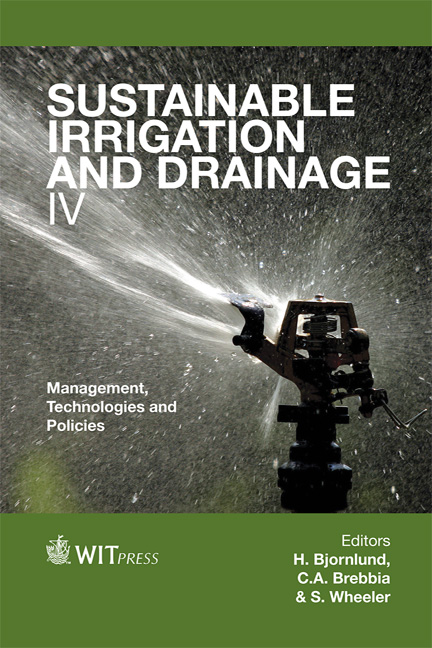Factors Responsible For The Effective Introduction Of Water-saving Irrigation Facilities In The Tarim River Basin
Price
Free (open access)
Transaction
Volume
168
Pages
9
Page Range
245 - 253
Published
2012
Size
772 kb
Paper DOI
10.2495/SI120211
Copyright
WIT Press
Author(s)
T. Yamamoto, A. Jalaldin & T. Nagasawa
Abstract
Chronic water shortage is one of the most pressing problems in the arid areas of China and as a compensation measure, the introduction of water-saving irrigation facilities has been proposed for water use in agriculture. However, in the Ugen River Basin, these water-saving irrigation facilities have produced varying results ranging from success to failure. Therefore, this study examines such cases and considers the factors responsible for the effective introduction of watersaving irrigation facilities in these regions. In general, capitalist farmers are individually responsible for the introduction, maintenance and management of the water-saving facilities, whereas general farmers collectively manage and maintain the facilities built with government subsidies. In addition, this study reports two cases in which collective management either required initial investments or covered all of the initial investment costs through government subsidies. However, these facilities were not necessarily well managed because of the differences in the management group, thus affecting their outcomes as an effective water-saving irrigation facility. By using game theory to obtain an optimal solution, the results of this paper indicate that the cost of work and maintenance accrued by the introduction of the water-saving facilities was less compared to both the incentives received in water-fee reductions as well as the increased yield of water-saving irrigation. Finally, we suggest that either the current yield needs to be increased twofold or the water fee needs to be increased for effective management of water-saving irrigation facilities, particularly in regard to collective management. Keywords: arid area, game theory, agricultural water use.
Keywords
arid area, game theory, agricultural water use.





